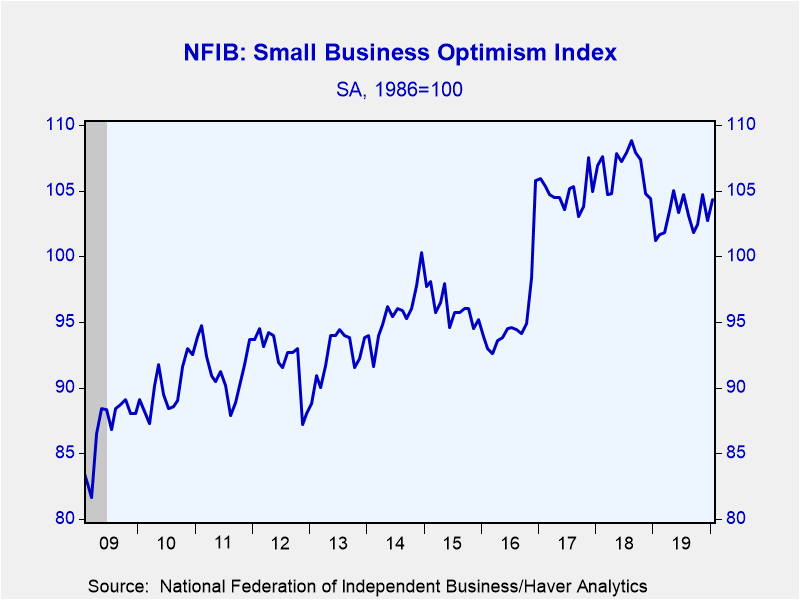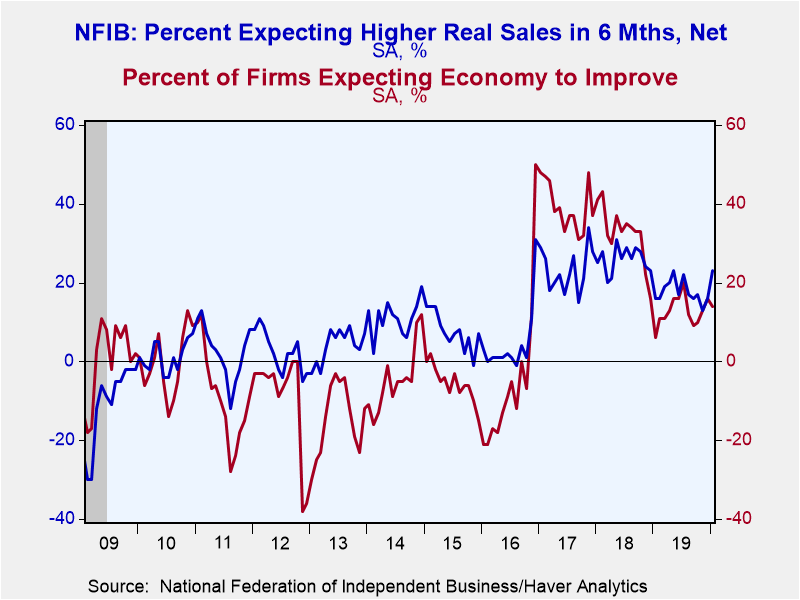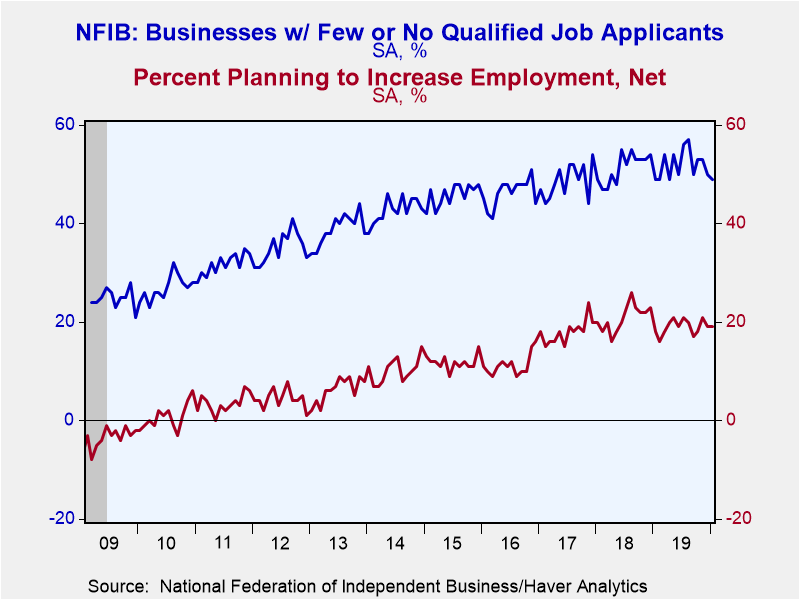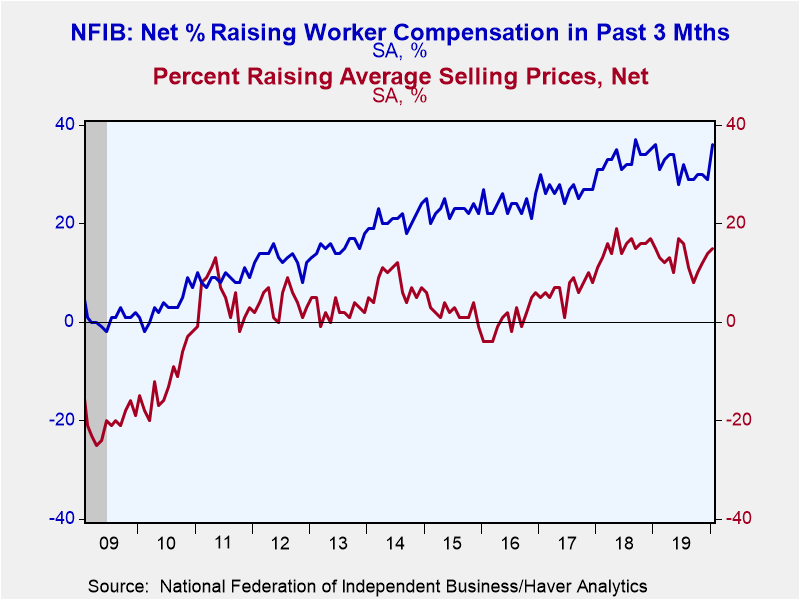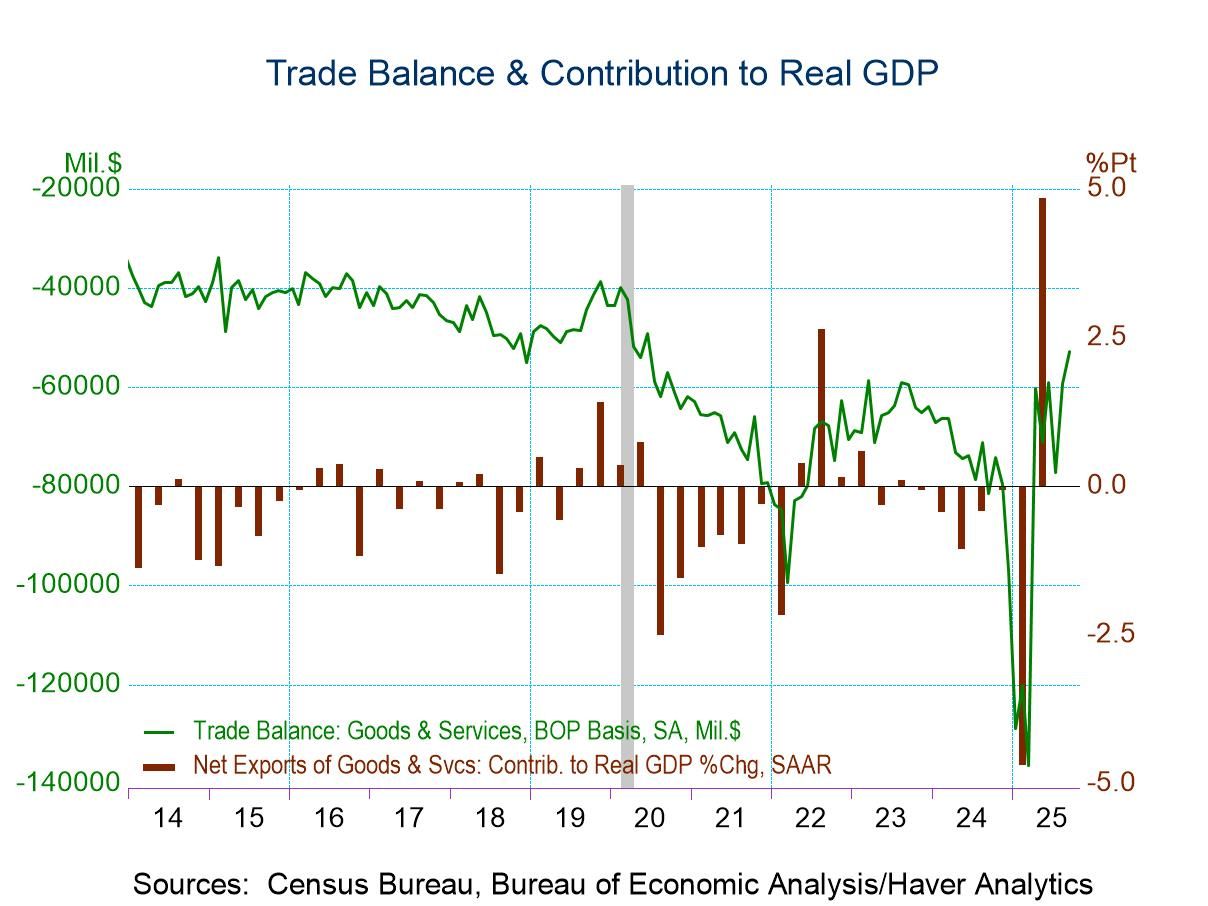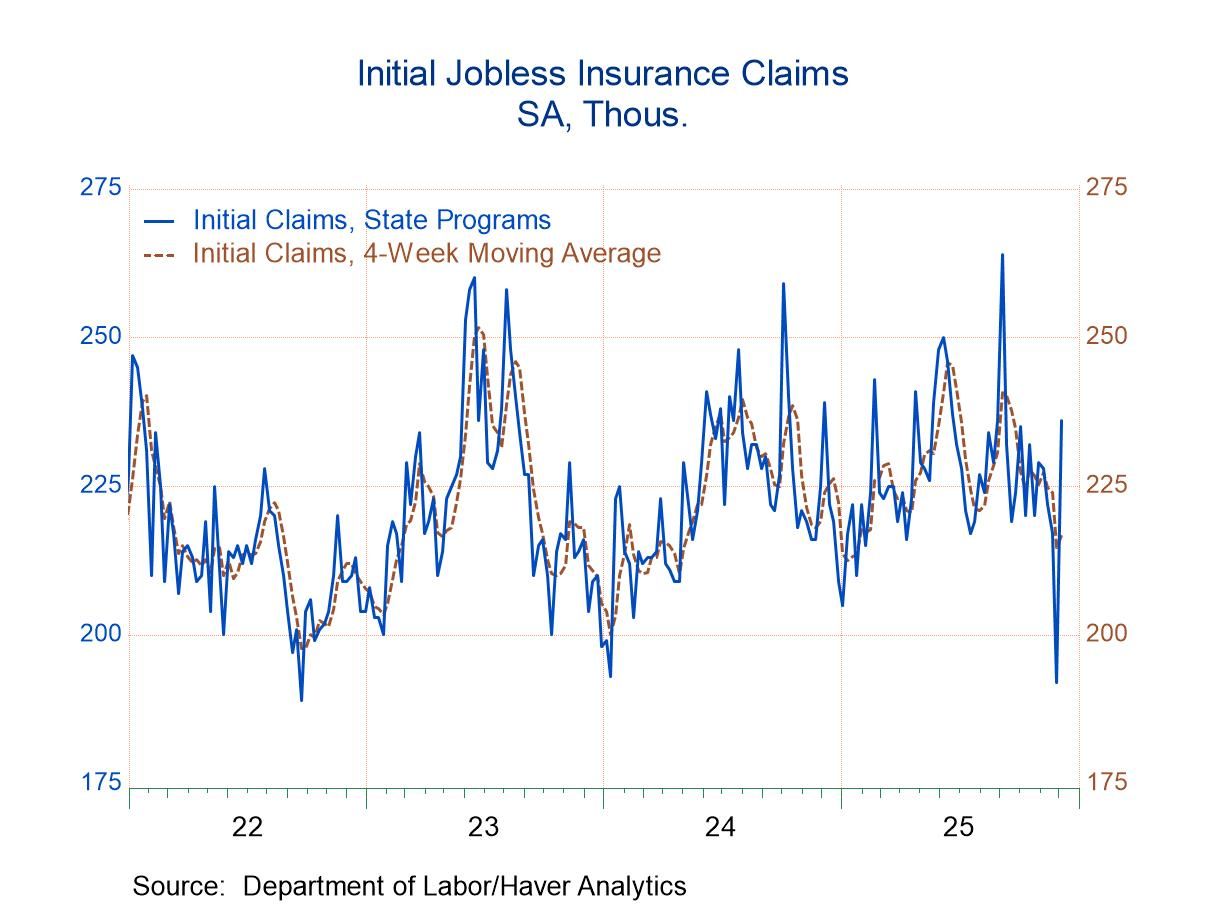 Global| Feb 11 2020
Global| Feb 11 2020U.S. Small Business Optimism Rebounds
by:Tom Moeller
|in:Economy in Brief
Summary
The National Federation of Independent Business (NFIB) reported that its Small Business Optimism Index improved 1.6% (3.1% y/y) to 104.3 during January and reversed its December decline. The reading remained 4.1% below the high [...]
The National Federation of Independent Business (NFIB) reported that its Small Business Optimism Index improved 1.6% (3.1% y/y) to 104.3 during January and reversed its December decline. The reading remained 4.1% below the high reached in August 2018.
The percentage of firms expecting higher real sales improved to 23% from 16% and the percentage of firms indicating that now was a good time to expand the business also rose to 28% from 25%. Working the other way, the percentage of firms expecting the economy to improve fell to 14% from 16%. Holding steady at 28% was the percentage of firms planning to make capital outlays, remaining below its August 2018 high of 33%.
On the labor front, the percentage of firms planning to increase employment held m/m at 19%, but remained off the expansion high of 26% in August 2018. A lessened 49% of businesses found few or no qualified candidates to fill job openings, down from 57% in August of last year.
A greatly increased 36% of firms raised worker compensation, just below the expansion high. A steady 24% of firms were planning to raise worker earnings, up from 17% six months earlier.
Current pricing power improved as 15% of firms reported raising prices, the most in six months but down from the high of 19% in May of 2018. A sharply higher 24% of firms were planning to raise average selling prices, the most since March of last year. That was increased from 15% in September.
Credit remained easy to get. Only four percent of firms reported trouble obtaining financing. Sixteen percent of firms reported difficulty near the end of the recession in 2009. A steady three percent of firms were not satisfied that their borrowing needs were met in the last three months.
The small business survey inquires about additional issues facing small business. An increased 26% reported a problem with the quality of labor and a steady 17% indicated that taxes were the largest problem. Government requirements were worrisome to a reduced 13% of respondents. That remained below the September 2013 high of 24%. A lessened eight percent of firms reported the cost of labor as the most significant problem, down from the record 11% in September of last year. Insurance cost/availability concerned an increased 11% of respondents. Competition from large businesses was felt by a greatly reduced nine percent of businesses as the biggest problem. Poor sales were significant for just seven percent of businesses, down from 32% in 2009. Financial & interest rate problems worried just one percent of respondents. Inflation concerned a lessened one percent of respondents as the biggest problem.
Roughly 24 million small businesses exist in the U.S. and they create 80% of all new jobs. The index is based 1986=100. The typical NFIB member employs 10 people and reports gross sales of about $500,000 a year.
The NFIB figures can be found in Haver's SURVEYS database.
| National Federation of Independent Business (SA, Net % of Firms) | Jan | Dec | Nov | Jan'19 | 2019 | 2018 | 2017 |
|---|---|---|---|---|---|---|---|
| Small Business Optimism Index (1986=100) | 104.3 | 102.7 | 104.7 | 101.2 | 103.0 | 106.7 | 104.9 |
| Firms Expecting Economy to Improve | 14 | 16 | 13 | 6 | 13 | 32 | 39 |
| Firms Expecting Higher Real Sales | 23 | 16 | 13 | 16 | 18 | 26 | 23 |
| Firms Reporting Now Is a Good Time to Expand the Business | 28 | 25 | 29 | 20 | 25 | 30 | 23 |
| Firms Planning to Increase Employment | 19 | 19 | 21 | 18 | 19 | 21 | 18 |
| Firms With Few or No Qualified Applicants for Job Openings (%) | 49 | 50 | 53 | 49 | 52 | 51 | 49 |
| Firms Expecting to Make Capital Outlays | 28 | 28 | 30 | 26 | 28 | 29 | 28 |
| Firms Reporting That Credit Was Harder to Get | 4 | 3 | 3 | 4 | 4 | 4 | 4 |
| Firms Raising Average Selling Prices | 15 | 14 | 12 | 15 | 13 | 15 | 7 |
| Firms Raising Worker Compensation | 36 | 29 | 30 | 36 | 31 | 33 | 27 |
Tom Moeller
AuthorMore in Author Profile »Prior to joining Haver Analytics in 2000, Mr. Moeller worked as the Economist at Chancellor Capital Management from 1985 to 1999. There, he developed comprehensive economic forecasts and interpreted economic data for equity and fixed income portfolio managers. Also at Chancellor, Mr. Moeller worked as an equity analyst and was responsible for researching and rating companies in the economically sensitive automobile and housing industries for investment in Chancellor’s equity portfolio. Prior to joining Chancellor, Mr. Moeller was an Economist at Citibank from 1979 to 1984. He also analyzed pricing behavior in the metals industry for the Council on Wage and Price Stability in Washington, D.C. In 1999, Mr. Moeller received the award for most accurate forecast from the Forecasters' Club of New York. From 1990 to 1992 he was President of the New York Association for Business Economists. Mr. Moeller earned an M.B.A. in Finance from Fordham University, where he graduated in 1987. He holds a Bachelor of Arts in Economics from George Washington University.


